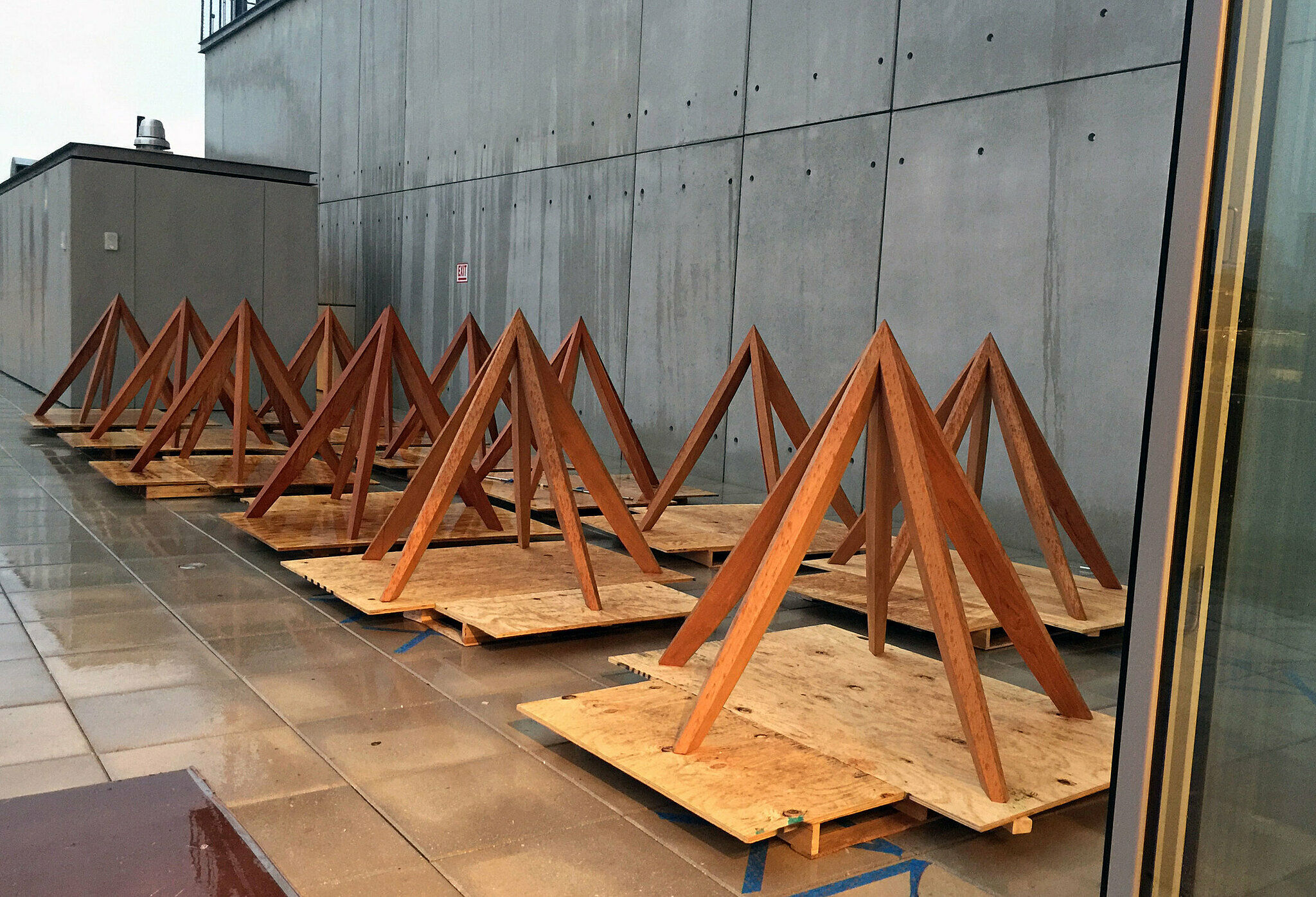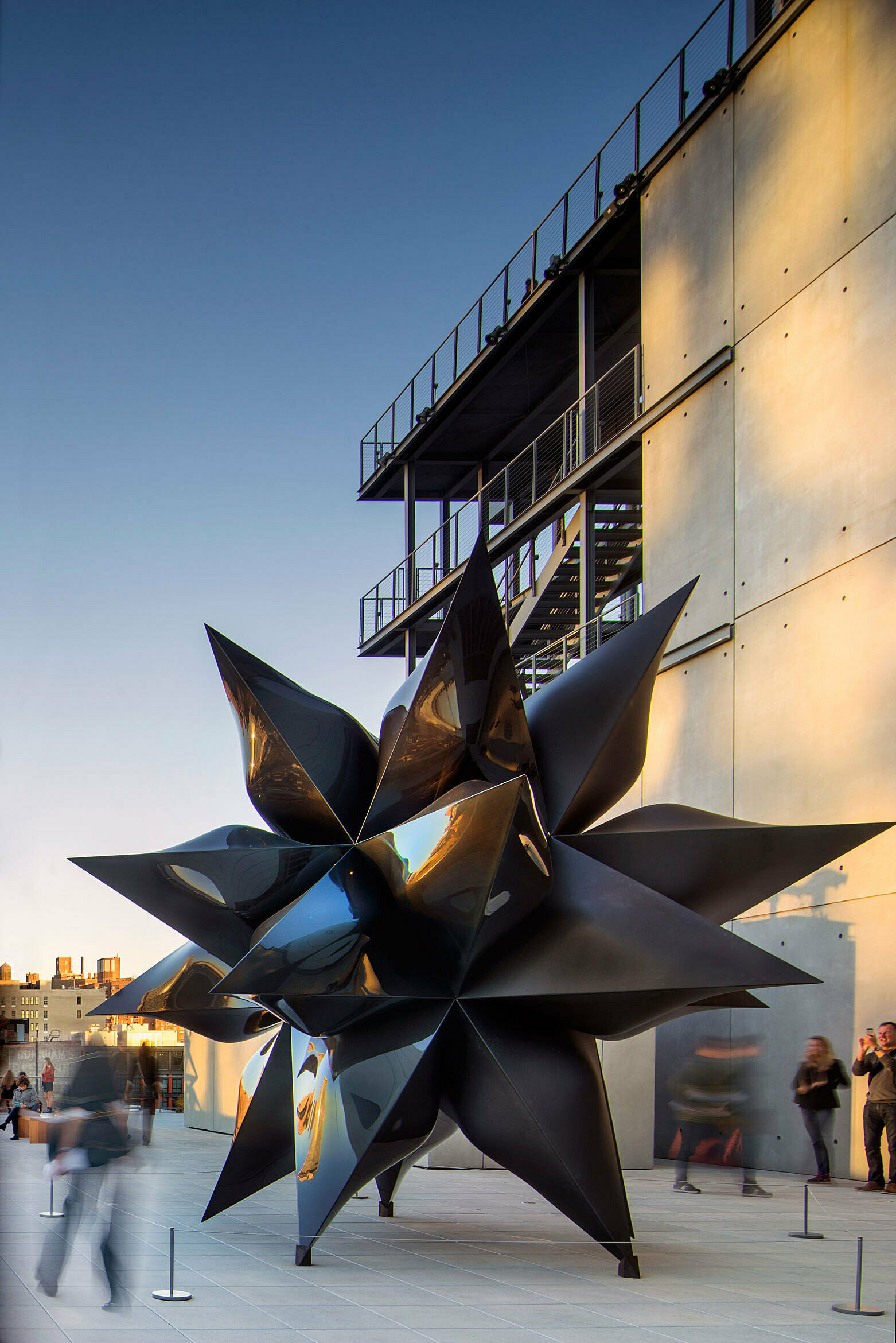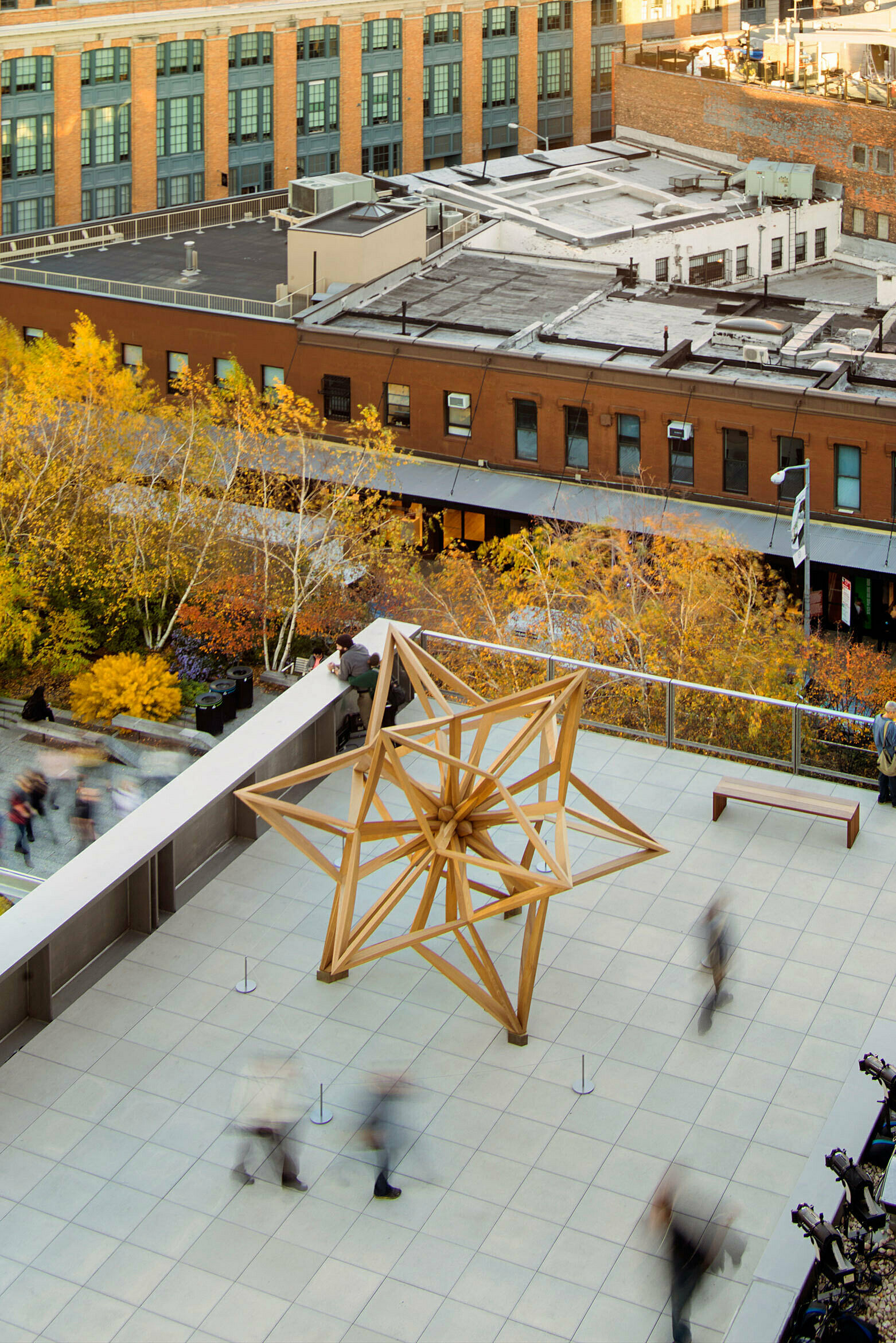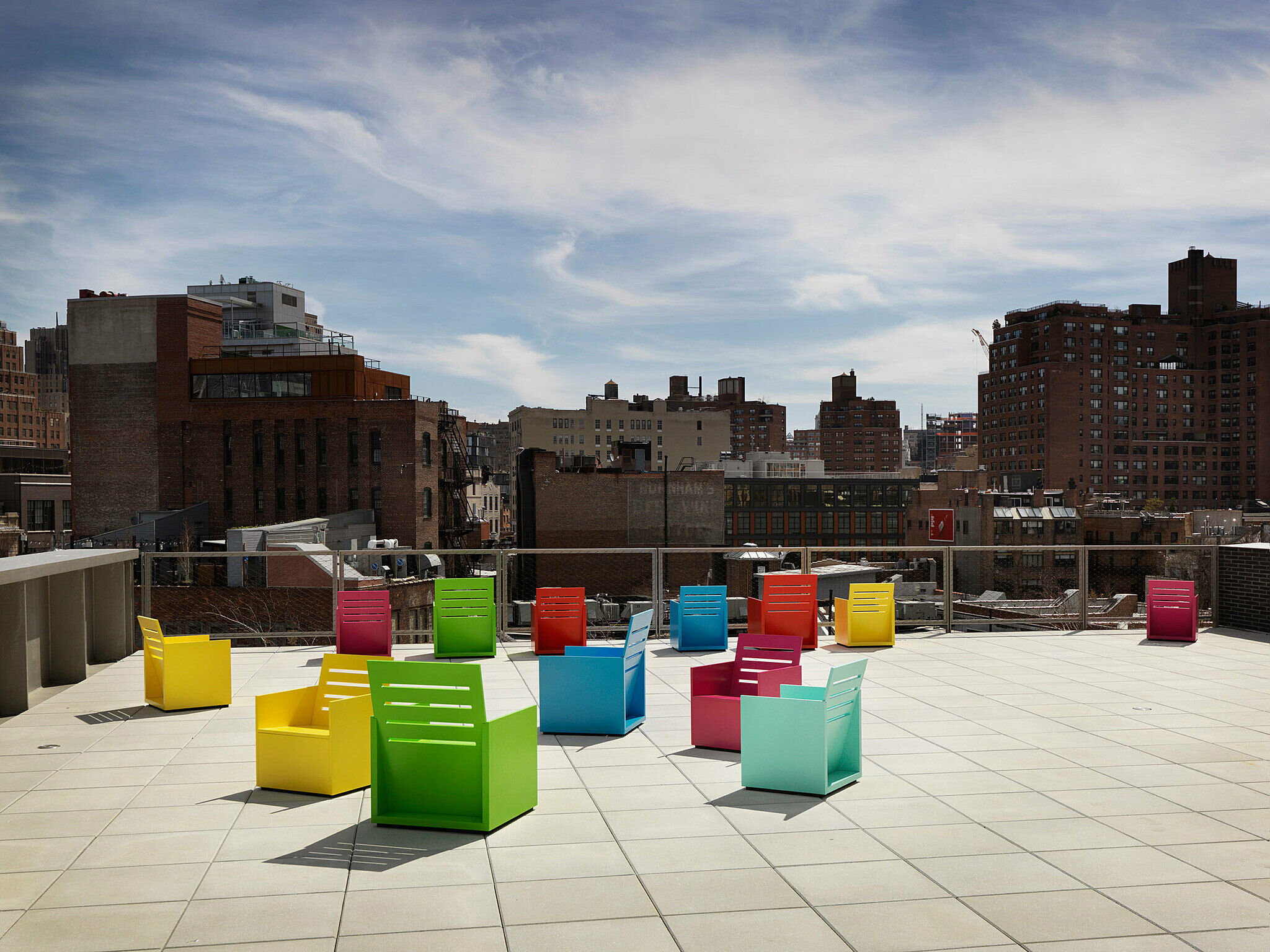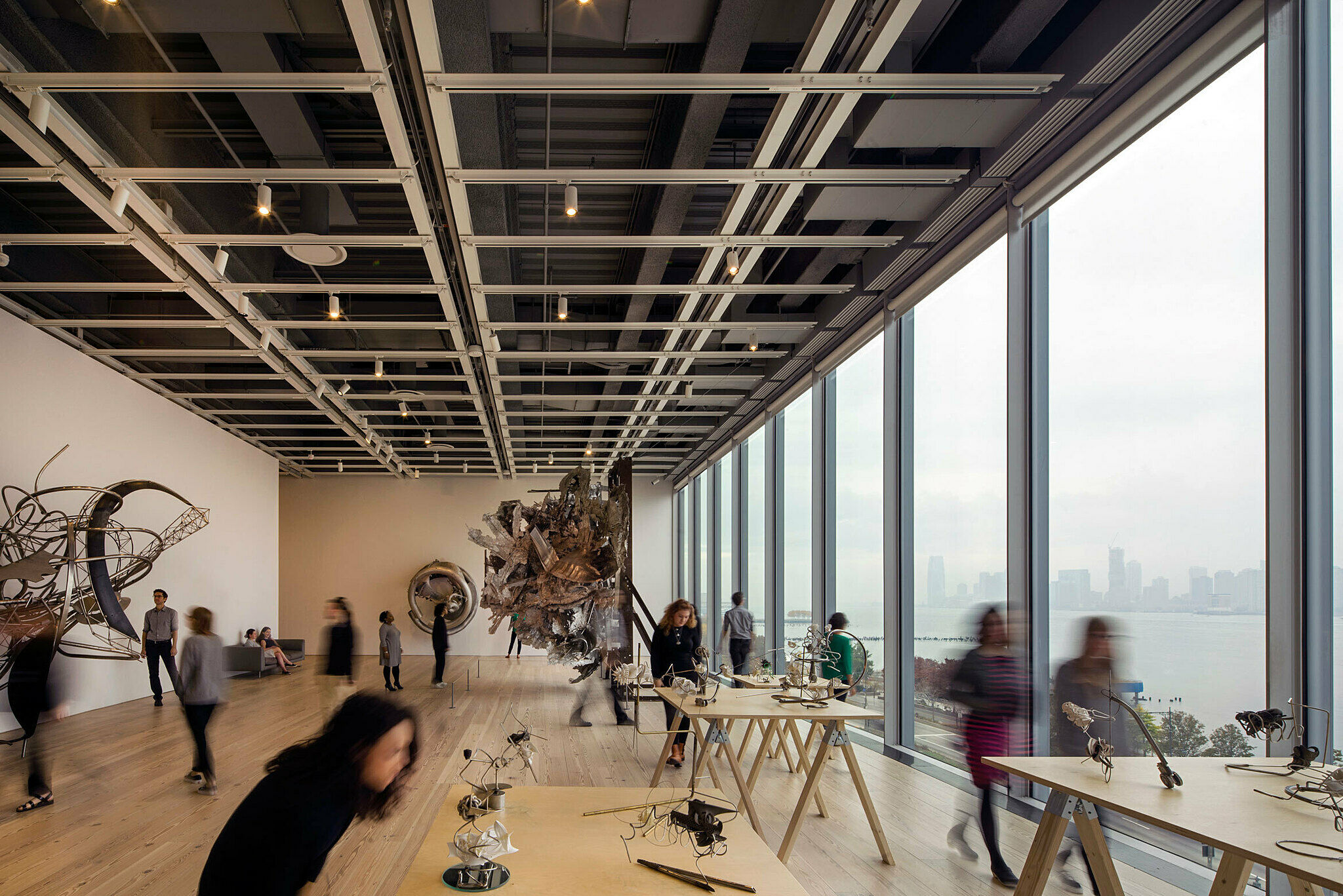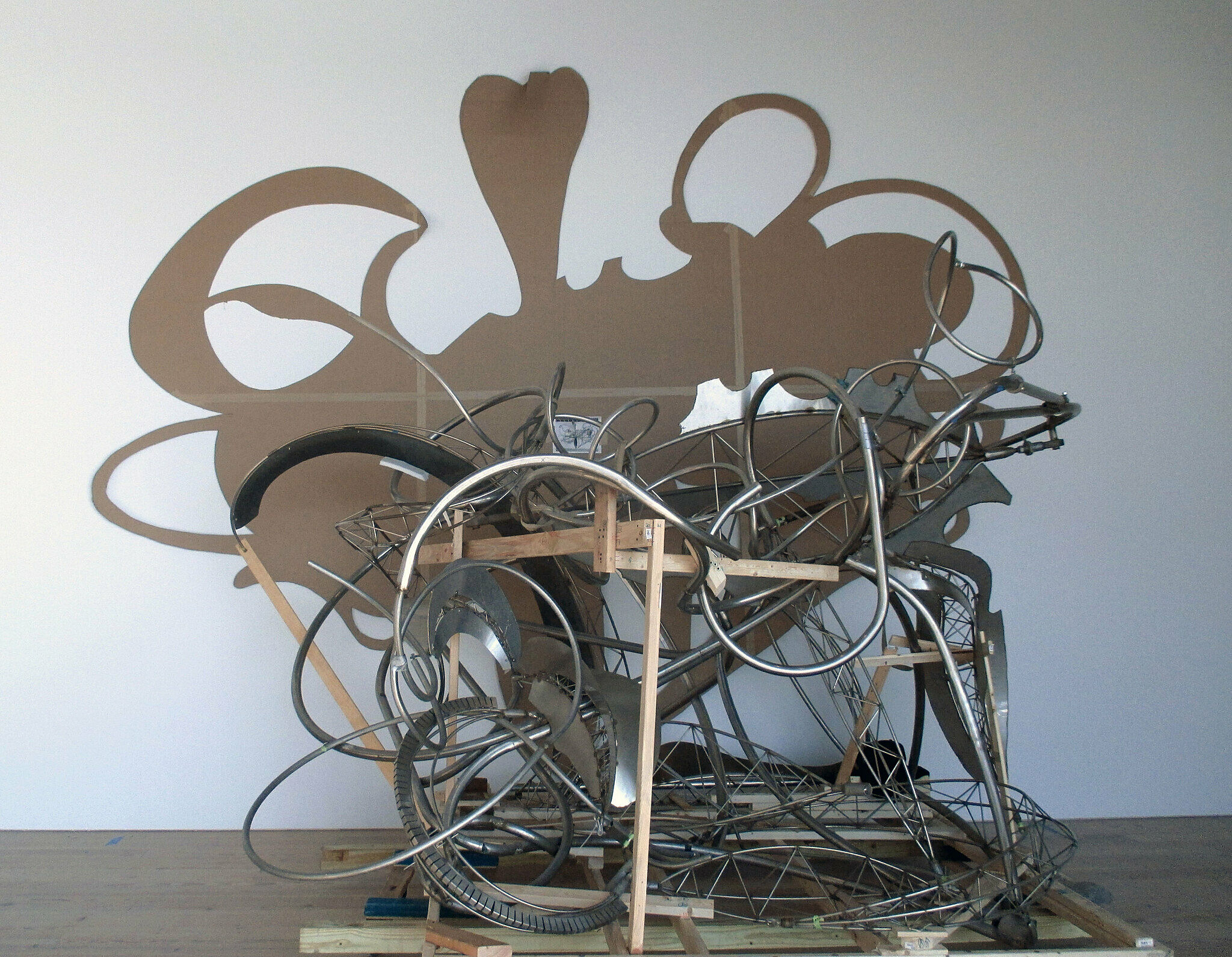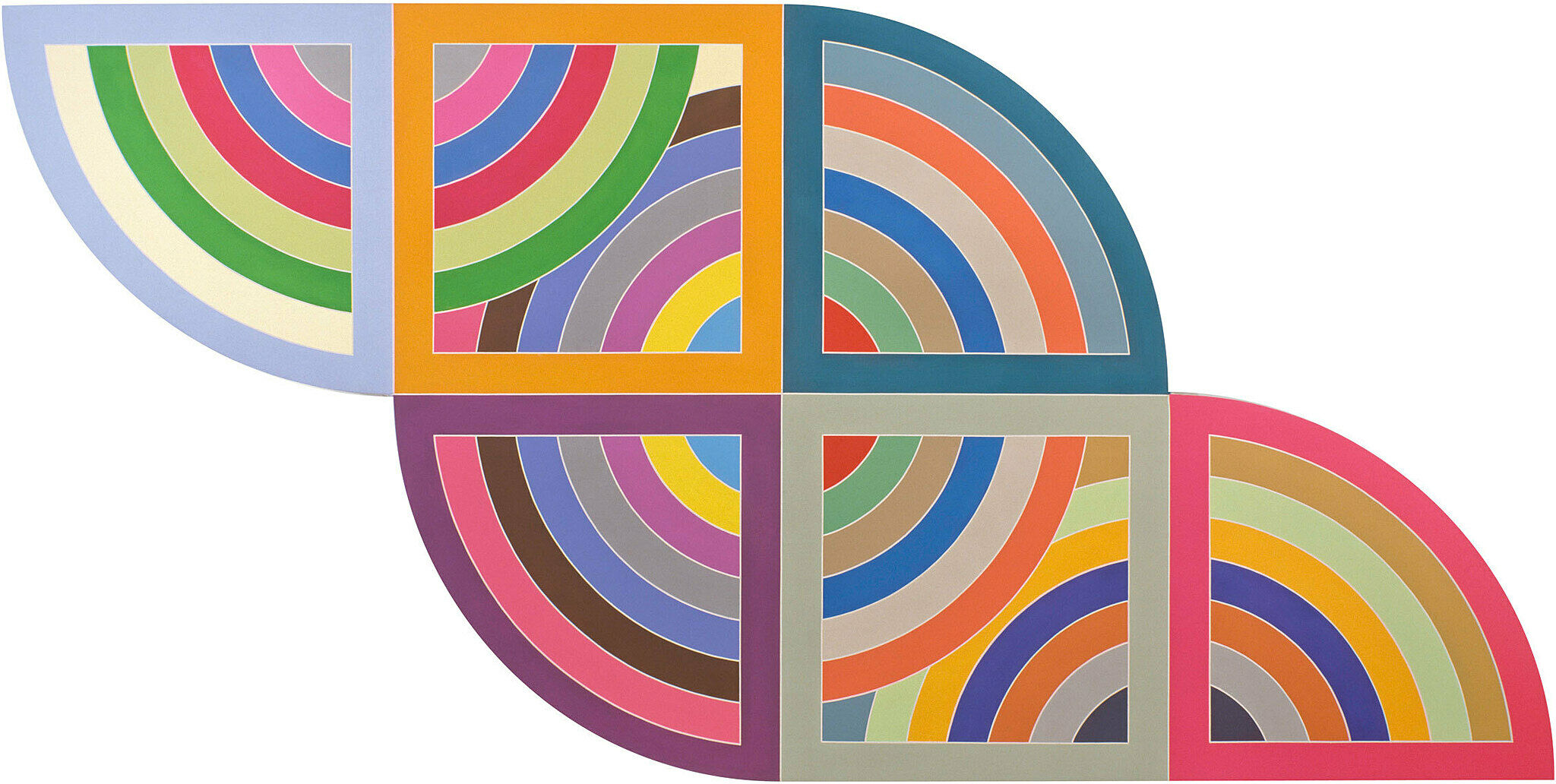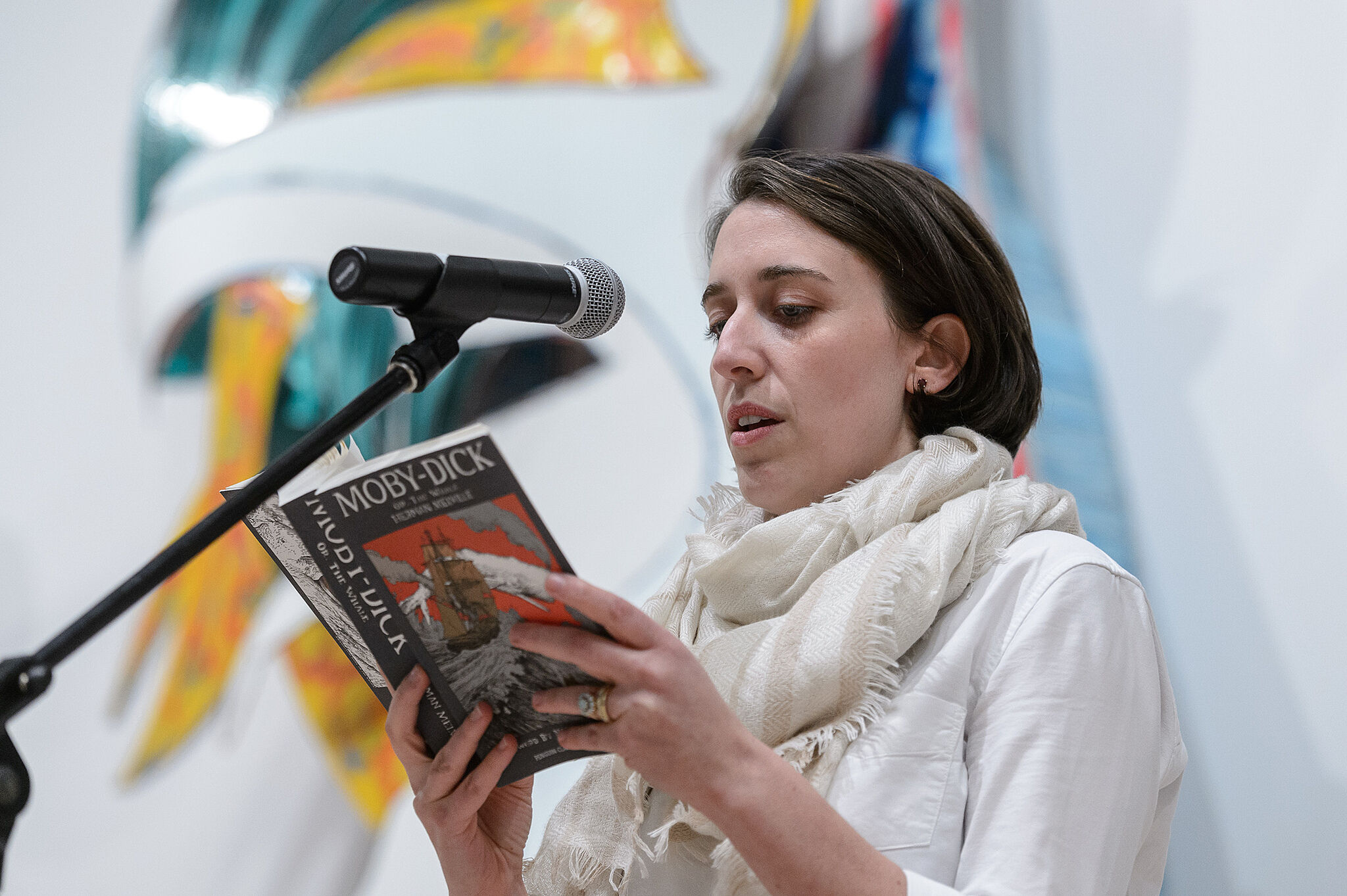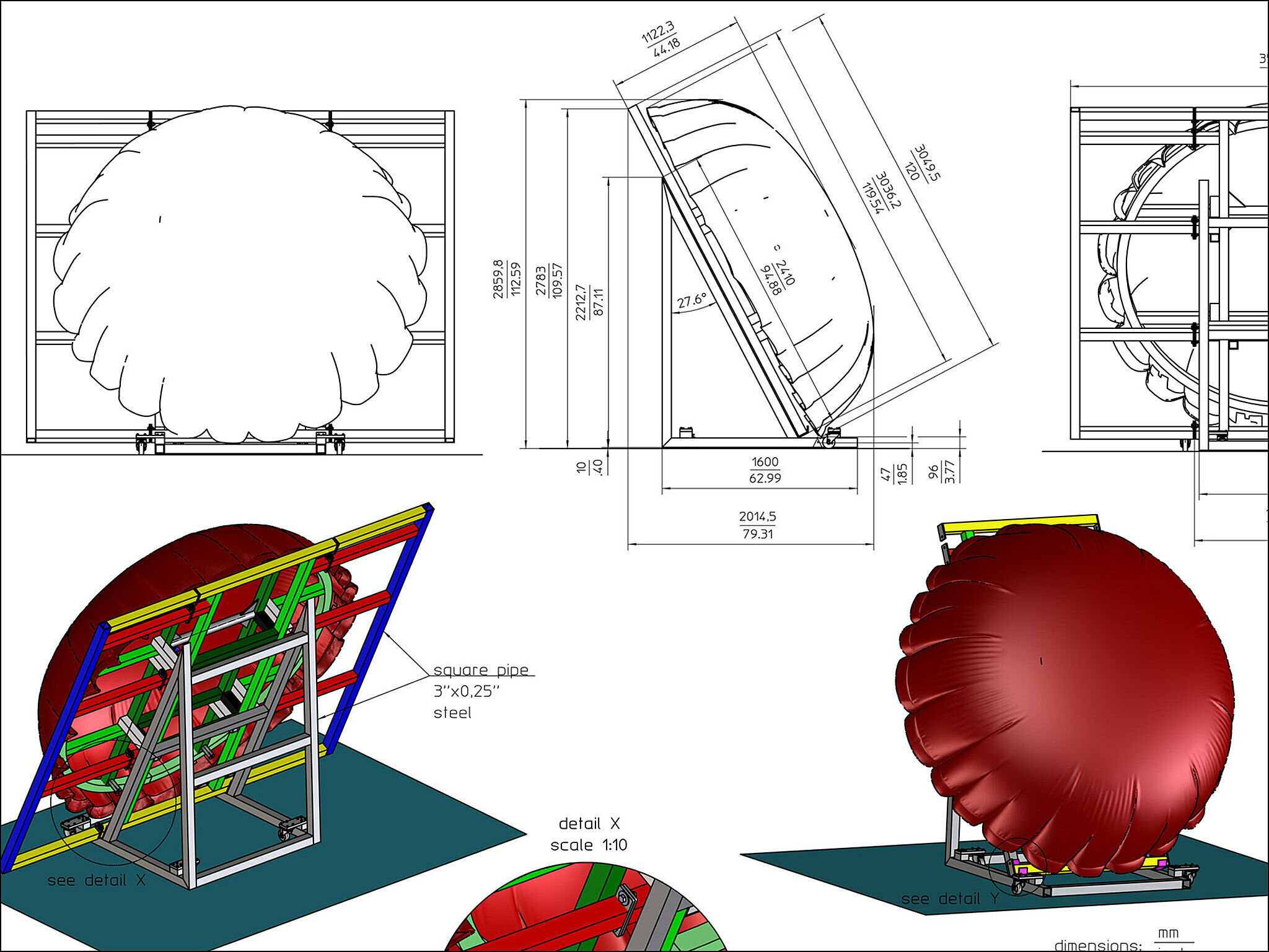How to Install a Two-Ton Star
Dec 15, 2015
In a Whitney Stories Q&A last year, the Whitney’s head preparator Joshua Rosenblatt described the installation of Jeff Koons: A Retrospective as the most challenging one to date, given the size of the works and the limitations of the Whitney’s uptown building. He also mentioned that while the new building would certainly improve things for art handlers, he hoped he would find a few challenges here that would keep things interesting.
With approximately 100 large-scale works, Frank Stella: A Retrospective is a perfect case study to examine the nuances of installing art at 99 Gansevoort Street. Below, Joshua answers questions about his team's process.
The Whitney's new building was built with large-scale works in mind; a giant freight elevator and enclosed loading dock eliminate many of the problems you faced uptown. Have you found any new challenges here?
Frank Stella: A Retrospective could never have been installed in our Madison Avenue building. One of the paintings in this exhibition is over 300 inches long, and there was no way to bring a work that large up to the galleries. In the new building, we were able to hoist it up through the elevator shaft, using a very elaborate system of custom-designed trusses and winches. There are new challenges in this building, but it’s because there are new possibilities.
There are two large sculptures on the Whitney’s fifth-floor terrace, Black Star (2014) and Wooden Star I (2014). What was your process for installing these works?
The Stars are great from an art handler’s perspective, because they’re designed as components that fit together. We brought in a spider crane—a piece of equipment that would have been much too big for the uptown building—to lift up the central armature of each star, get underneath it, and work around it. Although the pieces look like they would fit together precisely, in practice, the installation requires a lot of finesse. Almost every single art handler on the Whitney staff is a visual artist or musician, and this sensibility makes a huge difference when working on projects like this.
Because the works are installed on a terrace—and because the Museum’s location on the Hudson River can be quite windy—we had to consider how each shape might catch the wind. Black Star has solid planes, so we had to weigh it down from the inside to make sure a gust couldn’t move it. The work weighs 5,000 pounds on its own, and we added an extra 2,000; the bottom three legs are full of sand. In contrast, Wooden Star I is an open shape, so the wind blows right through it. It has little feet that we glued to the roof, and those are enough to keep it in place.
When you’re making calculations like this, it’s not just to minimize risk of something catching the wind; it’s to eliminate the risk.
That’s right. For her exhibition Sunset that was on view through September, Mary Heilmann designed brightly colored chairs on wheels, and the backs were very flat planes. Each chair was really heavy—about thirty pounds—but because of the design, a bubble of wind would get caught in the back and blow it around. To install them on the terraces, the artist had to revise the design to remove the wheels and put slats in the back, and we used a heavier material to fabricate the chairs. In the end, each one weighed seventy-five pounds.
There are quite a few large-scale sculptures in Frank Stella: A Retrospective. What were some of the issues you had to consider when installing them?
Raft of the Medusa (1990) is a tremendously heavy piece. It came from The Glass House where it was anchored to the ground, and had never been shown anywhere else. To install it here on the fifth floor, we needed to give it support from above using two huge cables that run to the ceiling. Our engineers suggested using really nice turnbuckles as part of the support, but Frank was perfectly happy with a really rough look. He just wanted these regular ratchet straps.
The other piece in the room is kandampat (2002). Almost twenty years ago, I tried to figure out how to get it into the Museum’s uptown building, but wasn’t able to—the scale of the work was too large for the Breuer building’s small entryways and freight elevator. It’s nice to see it here. It’s a bit of a success story.
Many of the works on view have traveled long distances for this exhibition. Does this affect your process?
To install this show we had to work with more couriers than usual. Couriers from museums across the country and around the world flew into New York to be present when each work was placed at the Whitney. After a courier leaves, the work can't be moved, so a lot of preparation has to be done. In many cases, the curatorial team has to decide where a work will go without even seeing it. Laying out multiple galleries like this simultaneously—especially when the works are so large—can be very challenging.
To help them, the art handling team built cardboard models of these works, drawing silhouettes freehand, from photographs. The maquettes were amazingly close to the real thing, and they'll travel to the next venue, the Modern Art Museum Fort Worth, to help the curatorial team lay out the exhibition there. We have talented people on staff who just love doing that kind of stuff. They look at the work and come up with the model quickly—and they do a really good job.


